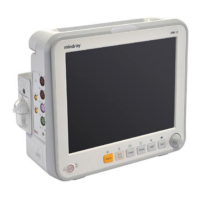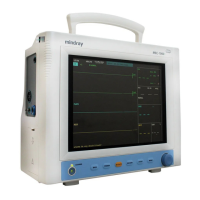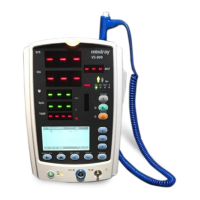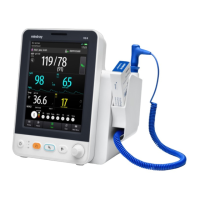24-3
24.3 Battery Guidelines
Life expectancy of a battery depends on how frequent and how long it is used. For a
properly maintained and stored lead-acid or lithium ion battery, its life expectancy is about
2 or 3 years respectively. For more aggressive use models, life expectancy can be less. We
recommend replacing lead acid batteries every 2 years and lithium ion batteries every 3
years.
To get the most out of the battery, observe the following guidelines:
The battery performance test must be performed every two years, before monitor
repairs, or whenever the battery is suspected as being the source of the problems.
Condition a battery once when it is used or stored for 3 months, or when its operating
time becomes noticeably shorter.
Take out the battery before the monitor is transported or will not be used for more than
3 months.
Remove the battery from the monitor if it is not being used regularly. (Leaving the
battery in a monitor that is not in regular use will shorten the life of the battery).
The shelf-life of a fully charged sealed lead acid battery is about 6 months and in 6
months the battery must be fully charged for storage. The shelf life of a Lithium Ion
battery is about 6 months when the battery is stored with the battery power being 50%
of the total power. In 6 months the battery power must be depleted before the Lithium
Ion battery is fully charged. Then run the monitor on this fully charged battery .When
its battery power becomes 50% of the total power, take out the battery from the
monitor and store it.
WARNING
z Keep the battery out of the reach of children.
z Use only the battery specified by the manufacturer.
z If the battery shows signs of damage or signs of leakage, replace it immediately. Do
not use a faulty battery in the monitor.

